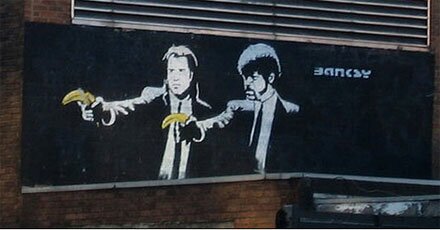
Once perceived as the scorn of urban areas, graffiti at its best has resulted in murals that transform dull architecture and even derelict neighborhoods and decrepit walls into vibrant & appealing spaces.
Graffiti is a tradition that reaches into the annals of history. Ancient Rome was rife with it, offering social commentary, satire and a reflection of the times. One graffito near Palatine Hill in Rome, the Alexamenos graffito, is believed to be the earliest known pictorial representation of the crucifixion of Jesus. Of such significance to Rome’s history, its graffiti was brilliantly brought to life by A52 in the title sequence for HBO’s series Rome.
Where as modern graffiti can truly serve aesthetic needs, its ancient counterpart appeared to lack the same lofty aesthetics. Perhaps it wasn’t as necessary in prominent cities abundant with ornate architecture and cobbled streets. Our modern urban areas maybe cleaner & more practical, but these concrete and asphalt jungles too frequently suffer from banality.
Granted graffiti has long been accused of producing “an atmosphere of social decay and neglect”, its artists subjected as criminals. A preponderance on uninspired writing in modern graffiti, amateurish chaotic scrawls, gang communications and misguided placement, lends credence to this argument. Subjective material in today’s uptight politically correct climate adds to the issue. It is understandable why local authorities would paint over or clean away such work.
However when the work is of such supreme excellence, when it clearly revitalizes an area, and its destruction produces a deterioration of the space, it is the local authorities that have committed a crime. Produced an urban tragedy.









